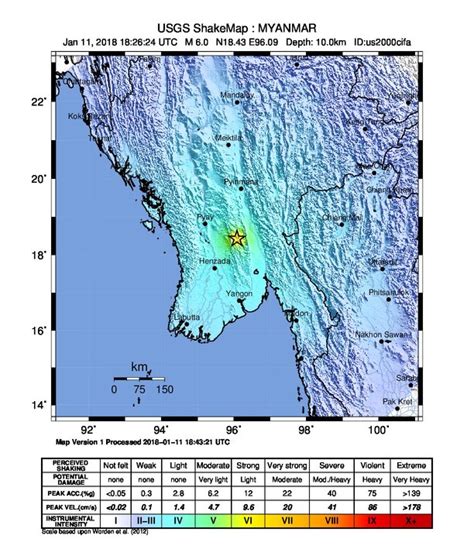The ground trembled and buildings swayed in Bangkok, Thailand, a city more than 600 miles away from the epicenter of the earthquake that struck Myanmar. The distant quake caused chaos in Bangkok, with skyscrapers dancing ominously on its horizon.
Imagine standing atop one of Bangkok’s towering structures as it gently rocks back and forth like a leaf in the wind. It’s a nerve-wracking experience knowing that such massive edifices are vulnerable to seismic events happening hundreds of miles away.
### A Tale of Frequencies
In the aftermath of the Myanmar earthquake, reports emerged about a 33-story building under construction collapsing in Thailand. The disaster left several people dead while dozens were still missing amidst the rubble.
Expert analysis indicated that large earthquakes emit various frequencies of shaking waves. These waves can travel long distances and wreak havoc when they reach populated areas like bustling cities or remote towns.
### Understanding Seismic Waves
When an earthquake strikes, it releases seismic waves at different frequencies. Some waves cause rapid shaking, while others induce slow swaying motions. This variability was evident during the Myanmar earthquake where high-frequency seismic waves demolished structures near its epicenter.
Buildings made with fragile materials like brick and masonry are particularly susceptible to destruction when hit by high-frequency shocks. In contrast, low-frequency seismic waves have been known to travel across great distances through the earth’s crust.
### Lessons from History
Back in 2002, Alaska experienced a powerful 7.9 magnitude earthquake known as Denali. The low frequency waves generated by this event traveled astonishingly far – causing water in pools and ponds all the way down in Texas and Louisiana to splash around for almost half an hour!
The interconnectedness of geological events is truly astounding; something as seemingly isolated as an earthquake thousands of miles away can set off a chain reaction felt across continents.
As experts delve deeper into understanding these phenomena, one thing remains clear – our world is constantly moving and shifting beneath our feet. Each quake serves as a reminder of nature’s immense power and unpredictability, urging us to be prepared for whatever may come our way.









Leave feedback about this